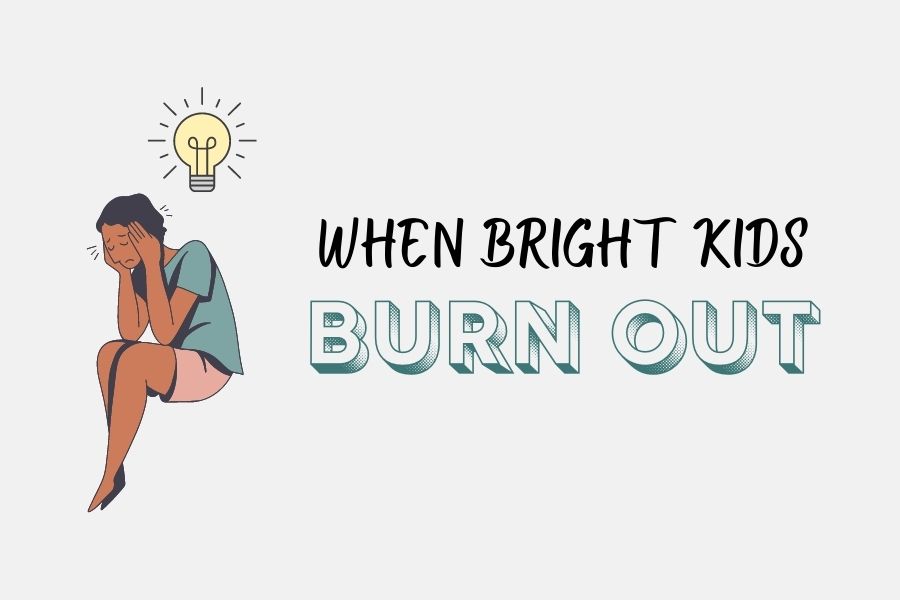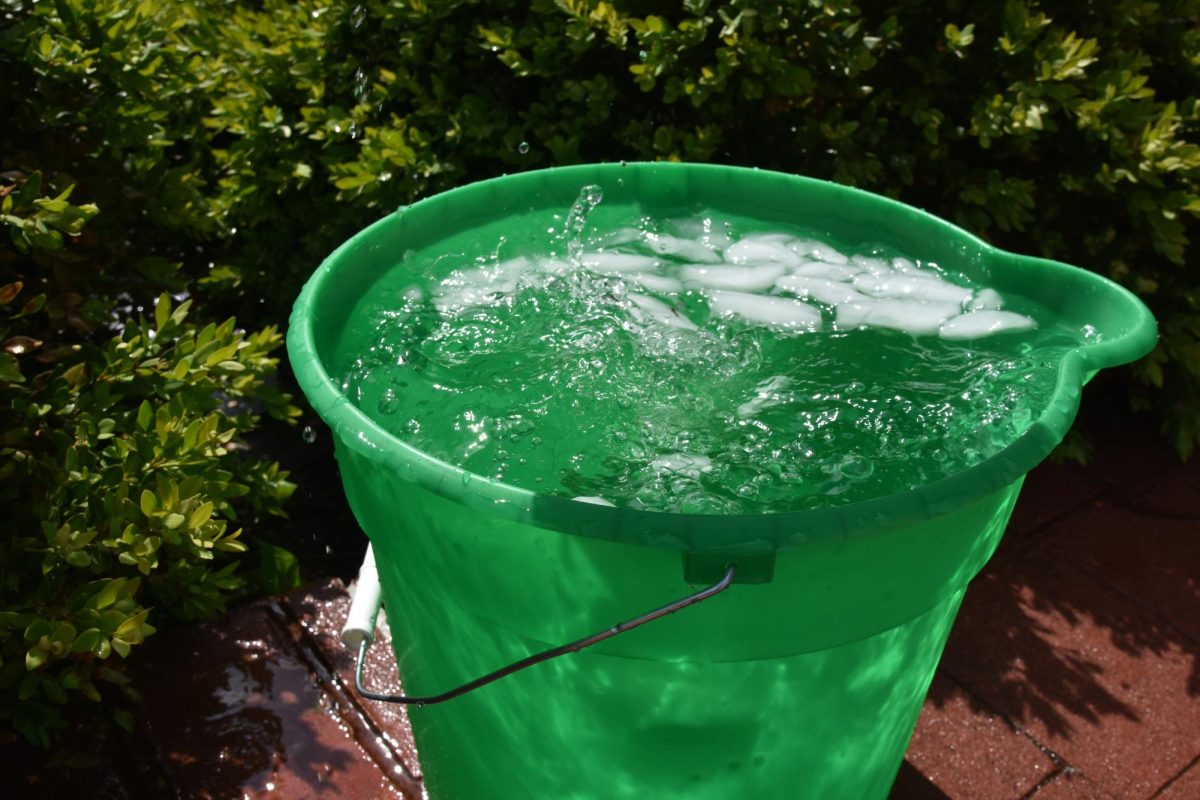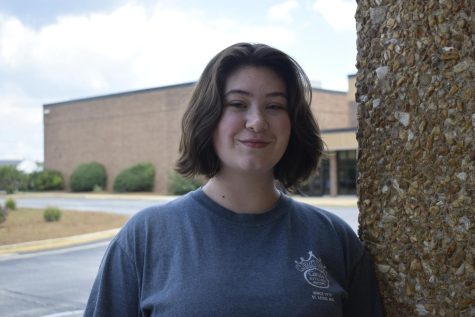Of the estimated 50.6 million students enrolled in K-12 public schools, about 3.2 million stand out from the pack. These kids are given a special name simply for scoring high on intelligence tests — “gifted”. To accommodate local students’ needs, the Parkway School District has fostered its own gifted program called MOSAICS.
The MOSAICS program was created to accelerate and enrich the educational environment of gifted students. After completing a test with a gifted specialist and being referred to the program by a school counselor, students enroll in the program. One of these students is junior Ronan Hatchell.
“[MOSAICS] was almost like an escape for me. I wasn’t too familiar with most of the kids in our elementary school, but I was able to be with people who were like me. Who I could get along with better. Who I could understand better,” Hatchell said.
In middle school, students enrolled in MOSAICS would alternate days attending the gifted program and Physical Education class. However, after hitting high school, students would no longer be enrolled in a separate class exclusively for gifted children. Instead, accelerated learning in AP and Honors classes could take the place of MOSAICS.
“[It] was certainly a weird experience. By which I mean, seeing all these people I didn’t know in the accelerated classes. [It was] cool, you know, new people, but it was weird to see that everyone else is also really smart. I wouldn’t say it knocked me down a peg—It’s kind of cool to see — but it also makes you wonder, then what am I? Why am I different in one way, but not the other?” Hatchell said.
After this transition from middle to high school, former members of the gifted program reported having less motivation to get assignments done. These signs point to the experience of burnout in students— the absence of motivation caused by improperly managed stress. Junior Riley Thering, also a former member of the gifted program, feels that this description closely describes the struggles she has faced after entering high school.

“I’ve just had no motivation to do schoolwork whatsoever. I get home, exhausted, lay in bed and yell at myself the entire time knowing I have to finish everything, even though I don’t have the motivation to do it. It slowly gets more overwhelming because there’s more and more schoolwork and more topics that I don’t understand. And it’s exhausting. I get less sleep because of it, it’s just a destructive cycle,” Thering said.
According to the Davidson Institute for Talent Support, a non-profit which works to open opportunities for gifted children, burnout can be seen in disengagement from interests, feelings of dread when relating to school, feeling overwhelmed at small tasks, general unmotivation, and more frequent anxiety.
“When I’m doing work, it’s not only a question of whether or not I am doing enough but also is it gonna be worth it? Like even when I put my mind to it, it doesn’t feel right sometimes,” Hatchell said.
While some believe that the gifted program is not tied to feelings of burnout in students, Thering feels that the pressure placed on herself and others from being in the program has a hand in worsening it.
“The pressure I put on myself because of the way I had been raised in the gifted program made the burnout stronger. I overwhelmed myself with having to get perfect grades,” Thering said. “And that’s not necessarily my parent’s fault or anything, but I was raised my whole life in MOSAICS getting praised for grades. Therefore, that became very important to me, or at least an area where I put a lot of pressure on myself.”
Amanda Megl, the gifted liaison for the Parkway High Schools and West Middle MOSAICS teacher, works to help lessen struggles like burnout in gifted students. However, Megl has still seen this phenomenon in a number of her own students.
“I think [burnout] is a kid by kid basis, so a lot of factors go into play. How strict are their parents? How high did their parents want them to achieve? What are the kids’ individual expectations for themselves? What kind of expectations do they have for the future? So I think, sometimes, kiddos can put a lot of stress on themselves because they want to please everyone and do really well,” Megl said. “They have these goals for their future and what they want to be, but sometimes they end up burning out because they don’t realize it’s okay to fail a little bit here and there. I currently have sixth graders who talk about ‘oh my gosh, I have a B’ like that’s a terrible thing. You have to be resilient because your whole life is not going to be perfect. You’re not going to make perfect grades, and you’re not going to be perfect at your job when you grow up.”
While Megl has implemented programs into the MOSAICS program to reduce student burnout, she still feels that gifted students suffer from it—especially members of the MOSAICS Academy Explorer Program. The Explorer Program allows eighth-grade students to attend certain high school classes and return to West Middle before the end of the school day.
“Some kids will start to feel burnt out…especially if they’re in the Academy Explorer Program. That can sometimes cause kids to have some burnout because they start going to high school when they’re in eighth grade, and taking high school level courses,” Megl said. “They’re accelerated one year above all their peers, so once they get to ninth grade, they’re doing 10th-grade work and so on, so forth. So I think that sometimes they can have some burnout with it. But that’s why I’m put in my position to help them out and give them some guidance if they need it.”
Although burnout has been attributed to enrollment in the gifted programs, the National Association for Gifted Children feels the programs still provide talented students outlets to challenge their thinking that is not provided in a typical classroom setting. Similarly, Parkway’s MOSAICS program was put into place to teach students research and technology skills and to think outside the box.
“It’s a program where they [students] get to relax. They get to do all of the things that cater to their strengths. So they get to be creative, [and] they get to problem solve. They get to think about things in different ways,” Megl said. “Sometimes in regular classes, they’re put in groups and do kind of what we would call like a cookie cutter activity. [A cookie cutter activity] was designed to be done exactly this way. Follow the steps and in the end, everybody’s stuff looks very similar, if not the same. In the gifted program, they have a little more leeway. They get a general idea of what they’re going to do, but everybody will make whatever they decide to.”
Former students may argue the complex issue of the effects of the gifted program, however, they still agree that overall MOSAICS is a positive program.
“I’d say there are certainly some negative aspects [to being in the gifted program], like the burnout I’ve clearly seen in myself and other people, but at the end of the day, I don’t know where I would be without it,” Hatchell said. “I’ve met so many great people, and done so many different things. If I had the choice to put myself in [the program], I would do it again. Sure burnout is never fun, but I think [the program] helps students like me.”





![Smiling in a sea of Longhorns, Fox 2 reporter Ty Hawkins joins junior Darren Young during the morning Oct. 3 pep rally. The last time West was featured in this segment was 2011. “[I hope people see this and think] if you come to [Parkway] West, you will have the time of your life because there are so many fun activities to do that make it feel like you belong here. I was surprised so many people attended, but it was a lot of fun,” Young said.](https://pwestpathfinder.com/wp-content/uploads/2025/10/Edited2-1200x798.jpg)
![West High seniors and families listen as a representative of The Scholarship Foundation of St. Louis, Teresa Steinkamp, leads a Free Application for Federal Student Aid (FAFSA) workshop. This session, held in the library, provided guidance on financial aid, scholarships and student loan options. “This event is very beneficial for any seniors who are applying to or considering applying to colleges after high school [because] the cost of college is on the rise for seniors and parents,” college and career counselor Chris Lorenz said.](https://pwestpathfinder.com/wp-content/uploads/2025/09/DSC_4478-1200x778.jpg)
![Senior Kamori Berry walks across the field during halftime at the Homecoming football game on Sept. 12. During the pep assembly earlier that day, she was pronounced Homecoming Queen. “I thought it was nice that the crowd [started] cheering right away. I know [my friends] were really excited for me, and my family was happy because typically non-white people don't win,” Berry said.](https://pwestpathfinder.com/wp-content/uploads/2025/09/DSC7046-Enhanced-NR-1200x798.jpg)



![Pitching the ball on Apr. 14, senior Henry Wild and his team play against Belleville East. Wild was named scholar athlete of the year by St. Louis Post-Dispatch after maintaining a high cumulative GPA and staying involved with athletics for all of high school. “It’s an amazing honor. I feel very blessed to have the opportunity to represent my school [and] what [it] stands for,” Wild said.](https://pwestpathfinder.com/wp-content/uploads/2025/05/unnamed-6-1200x714.jpg)
![The Glory of Missouri award recipients stand with their certificates after finding out which virtue they were chosen to represent. When discovering their virtues, some recipients were met with contented confirmation, while others, complete surprise. “I was not at all surprised to get Truth. I discussed that with some of the other people who were getting the awards as well, and that came up as something I might get. Being in journalism, [Fellowship of Christian Athletes and] Speech and Debate, there's a culture of really caring about truth as a principle that I've tried to contribute to as well. I was very glad; [Truth] was a great one to get,” senior Will Gonsior said.](https://pwestpathfinder.com/wp-content/uploads/2025/04/Group-Glory-of-Missouri.jpg)

![After a thrilling point, senior Katie Byergo and junior Elle Lanferseick high-five each other on Oct. 8. With teamwork and camaraderie, Byergo worked together in the game against Lafayette High School. “[Byergo’s] is really positive with a good spirit,” Lanferseick said. “I set her [the ball] and she hits it [or] gets the kill.”](https://pwestpathfinder.com/wp-content/uploads/2025/10/DSC_9349-1-e1761159125735-1200x791.jpg)
![Focused on providing exceptional service, sophomore Darsh Mahapatra carefully cleans the door of a customer’s car. Mahapatra has always believed his customers deserve nothing less than the best. “[If] they’re trusting us with their car and our service, then I am convinced that they deserve our 100 percent effort and beyond,” Mahapatra said.](https://pwestpathfinder.com/wp-content/uploads/2025/10/DSC_0018-1200x800.jpg)
![Sophomore Aleix Pi de Cabanyes Navarro (left) finishes up a soccer game while junior Ava Muench (right) warms up for cross country practice. The two came to Parkway West High School as exchange students for the 2025-2026 school year. “The goal for the [exchange] program is to provide opportunities for both Parkway students and our international exchange students to learn about other cultures, build connections and become confident, capable, curious and caring — Parkway’s Four C’s — in the process,” Exchange Program Lead Lauren Farrelly said.](https://pwestpathfinder.com/wp-content/uploads/2025/10/Feature-Photo-1200x800.png)
![Leaning on the podium, superintendent Melissa Schneider speaks to Parkway journalism students during a press conference. Schneider joined Parkway in July after working in the Thompson School District in Colorado. “My plan [to bond with students] is to get things on my calendar as much as possible. For example, being in [classes] is very special to me. I am trying to be opportunistic [meeting] kids [and] being in [the school] buildings. I have all the sports schedules and the fine arts schedules on my calendar, so that when I'm available, I can get to them,” Schneider said.](https://pwestpathfinder.com/wp-content/uploads/2025/09/IMG_5425-1200x943.jpeg)
![Gazing across the stage, sophomore Alexis Monteleone performs in the school theater. The Monteleone family’s band “Monte and the Machine” has been releasing music since 2012, but Alexis started her own solo career in 2024 with the release of her first single, Crying Skies. “My whole family is very musical, [and I especially] love writing [songs with them],” Monteleone said.](https://pwestpathfinder.com/wp-content/uploads/2025/09/DSC7463-1200x798.jpg)
![Leaping through the air, senior Tyler Watts celebrates his first goal of the season, which put the Longhorns up 1-0 against the Lafayette Lancers. Watts decided to play soccer for West for his last year of high school and secured a spot on the varsity roster. “[Playing soccer for West] is something I had always dreamed of, but hadn’t really had a good opportunity to do until now. It’s [really] fun being out [on the field], and I’m glad I decided to join the team. It’s just all about having fun with the boys and enjoying what time we have left together,” Watts said.](https://pwestpathfinder.com/wp-content/uploads/2025/09/DSC_1951-1200x855.jpg)

![Shifting global trade, President Donald Trump’s tariffs are raising concerns about economic stability for the U.S. and other countries alike. “[The tariffs are] going to pose a distinct challenge to the U.S. economy and a challenge to the global economy on the whole because it's going to greatly upset who trades with who and where resources and products are going to come from,” social studies teacher Melvin Trotier said.](https://pwestpathfinder.com/wp-content/uploads/2025/05/MDB_3456-1200x800.jpg)
![Red, white and blue, the American flag holds the values of our democracy. The fight that we once endured has returned, as student journalists and senior correspondents across the country are losing their voices due to government control. “[Are] the White House and [the] government limiting free speech [and] freedom of the press? Yes [they are],” chief communications officer of the Parkway School District and former journalist Elisa Tomich said.](https://pwestpathfinder.com/wp-content/uploads/2025/03/Untitled-design-14.jpg)
![Freezing in their position, the Addams Family cast hits the “rigor mortis” pose after cast member and senior Jack Mullen, in character as Gomez Addams, calls out the stiff death move. For the past four months, the combined company of cast members, orchestra pit, crew and directors all worked to create the familial chemistry of the show. “I’m excited for [the audience] to see the numbers, the music, the scenes, but I also just love all the technical aspects of it. The whole spectacle, the costumes, makeup and the people that put in the work backstage in order to make the show successful on stage. I’m excited for people to see and appreciate that,” Mullen said.](https://pwestpathfinder.com/wp-content/uploads/2025/03/DSC0116-1200x800.jpg)

Emily Early • Dec 9, 2021 at 4:14 pm
Very well written. Amazing job going in-depth and showing the very real problem many students are facing.
Marilyn Wood • Dec 7, 2021 at 11:54 pm
Great article about a very real problem which seems to be getting worse in our schools.
Kim • Dec 2, 2021 at 6:44 pm
A thoughtful article about a very real problem we are facing.